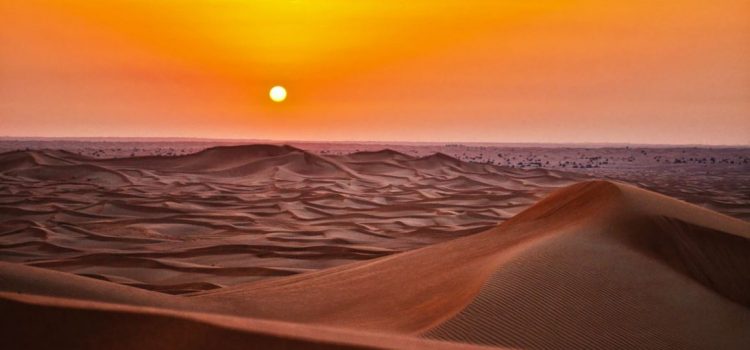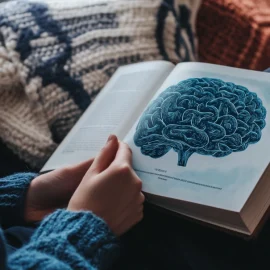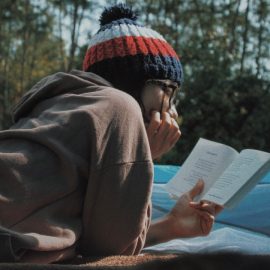

This article is an excerpt from the Shortform book guide to "The Alchemist" by Paulo Coelho. Shortform has the world's best summaries and analyses of books you should be reading.
Like this article? Sign up for a free trial here .
Are you looking for an analysis of The Alchemist by Paulo Coelho? What are some of the symbols and lessons that can be found throughout the story?
The Alchemist by Paulo Coelho is a story of transformation. But rather than transforming lead into gold, Coelho teaches readers, through the story of a shepherd boy who is following his dreams, the power of transformation for our lives.
Keep reading for The Alchemist analysis and overview.
The Alchemist Story
Our The Alchemist analysis begins with an overview of the book’s history. The Alchemist is the story of an Andalusian shepherd boy’s journey of spiritual awakening. The boy gives up everything to embark on a long journey across the desert toward the Egyptian pyramids, to look for a treasure he has dreamed of. He follows omens and the wisdom of spiritual guides he meets along the way. He encounters obstacles and trials, and he learns lessons from them about taking risks, conquering fears, and listening to his heart. In this story, Paulo Coelho teaches us about learning the universal language of love, to connect with the Soul of the World and use its power to transform our lives.
Coelho is a Brazilian novelist who has published over 30 literary works, from the 1980s to the present. In 1986 he walked the Camino de Santiago pilgrimage road and had a spiritual awakening that he wrote about in his book The Pilgrimage and that inspired the direction of his work going forward, including The Alchemist. To date, The Alchemist, published in 1988, is Coelho’s best-known work and was an international bestseller.
In a 2009 interview with the Syrian Forward Magazine, Coelho credited the Sufi tradition of Islam and the 13th-century poet Rumi with being a major inspiration for The Alchemist.
In this guide, we’ll summarize the story of the shepherd boy and the alchemical lessons he learns, and we’ll compare some of the ideas to other philosophical and spiritual traditions and beliefs, such as Vedantic philosophy, Sufism, and the law of attraction.
The Shepherd Boy
The Alchemist begins with an Andalusian shepherd boy, Santiago, who dreams of traveling. He’s expected by his parents to go into the priesthood, but he chooses instead to become a shepherd so he can wander the countryside. He prefers constant travel because when you stay in one place, he says, too many people get too involved with you, and therefore expect you to conform to how they think you should live.
Through this backstory, Coelho establishes that Santiago is one who follows his own path in life. We learn through this character, and others along the way, how important it is to not give in to others’ expectations and to be true to yourself and find your own destiny.
The Dream
As we follow the boy’s travels, Coelho first takes us through the Spanish countryside, to an old ruined church where the boy stops with his flock to sleep. There’s a sycamore tree growing in the midst of the ruins, and each time the boy sleeps under it he has the same dream: of a child who magically transports him to the Egyptian pyramids.
When the boy arrives in the next town, he visits a fortune-teller to inquire about the meaning of his dream. She tells him that dreams are the “language of God” and that he must heed this dream and go to the Egyptian pyramids, where a treasure awaits him. He finds this conclusion preposterous and goes about his day.
We see in this part of the story that the boy is dismissing his dream as meaningless and is in danger of not following his calling. Here, Coelho shows us that the universe gives us signs and prompts to recognize our calling, but we often ignore them. However, we see that for a person who truly wants to find their destiny, the universe will not give up so easily and will give them more chances to recognize its signs.
Later that day the boy encounters an old man in the town plaza, who affirms the fortuneteller’s message and has much more advice for him.
The King
The old man in the plaza, who turns out to be a king named Melchizedek, strikes up a conversation with Santiago, and through this conversation, Coelho teaches us about the importance of following the signs that will guide you to your destiny.
Follow Your Calling
The major insight Coelho reveals through the king is that everyone has what he calls a Personal Legend. This is essentially your calling in life, which you feel as a passion drawing you toward it. It’s that thing you most dream of doing in your life. People feel this pull most strongly in childhood, the king explains, as children are more in tune with the spiritual realm and are not afraid to dream big. However, he says this pull subsides as we grow older and become conditioned to live according to societal expectations. Eventually, many reject their calling entirely, believing it to be unachievable and unrealistic. However, the king explains that everyone’s dream is realizable at any time, and when you pursue it, the universe will work with you to help you achieve it. Pursuing this calling is our only real purpose in life, though most people will never accomplish that.
Over the course of this conversation, the boy is convinced that he needs to follow his calling and go to the Egyptian pyramids to find his treasure. The king advises him that a crucial part of following one’s calling is paying attention to signs.
The boy decides that day to sell all his sheep to buy passage to Africa. In this decision, Coelho is showing us that sometimes we have to make major sacrifices to follow our dreams, and we will come to learn that it’s always worth the risk.
The Merchant
Through the next important encounter in the story, Coelho shows us what can happen when we encounter obstacles on our path, and what becomes of those who don’t follow their life’s calling.
When Santiago arrives in Africa, before setting out toward Egypt, he’s robbed of all his money. This is the first major obstacle along his way. He becomes discouraged and begins to doubt everything he’s believed in. But he realizes that he needs to earn money to either continue on his journey, or return home, so he acquires a job in the shop of a crystal merchant, where he ends up working for a year.
During that time, Santiago has many conversations with the merchant, some of them about following his calling. The merchant tells the boy that he’s always dreamed of going on pilgrimage to the holy city of Mecca; it’s his calling in life. However, when Santiago asks why he doesn’t go, the merchant admits that he prefers that it stay a dream. He feels that if he actually achieves it, he’ll have nothing left to dream of, and therefore nothing to live for.
In the character of the merchant, Coelho shows us a sad portrait of one who doesn’t have the courage to follow his dreams. We see in this portion of the story how many people don’t pursue their calling due to fear of failure and to being conditioned by society to stay in their comfort zone and not take risks.
After a full year, Santiago saves enough money to either return to Andalusia and buy a new herd of sheep, or to continue to Egypt. He initially decides to go home. He longs for the comfort of what he knows and the simplicity of the shepherd’s life, and he’s become resigned like the merchant. But just as he’s on his way to make travel plans for home, he remembers the words of the king, telling him that when you pursue your calling the universe will work with you to make it happen. He realizes he’s making his decisions based on fear and seeking comfort over taking risks, and he decides to book passage on a caravan across the desert to Egypt.
With this decision, Coelho shows us that when we face obstacles and find ourselves at a crossroads, we need to remember that the universe will help us if we choose to take risks. But, we also see that it often takes hard work and dedication. Coelho makes it clear that Santiago had to put substantial effort into overcoming those obstacles—it wasn’t all magically handed to him.
The Englishman
Through the next character we encounter, Coelho teaches us about tapping into our collective spiritual power.
Traveling on the desert caravan along with the boy is an Englishman, who’s seeking to learn alchemy, the magical art of turning lead into gold. While the Englishman is explaining alchemy to the boy, he tells him about the Soul of the World and its universal language.
The Divine Spirit
The Englishman discusses alchemy as the magical art of transformation, rooted in what he calls the Soul of the World—the divine spirit of the universe. He explains that in order to enact magical transformation, you need to be connected to the power in this divine spirit. He says that everything living is always changing and being transformed, but the more connected you are to the divine spirit, the more you have the power to transform things to your will. And the more the universe works in your favor.
Connecting to the divine spirit involves learning to communicate with it, the Englishman explains. He says that on the spiritual level of life, everything speaks the same language, and the signs the universe gives you are expressions of that language. So, learning that “language” requires developing your intuition, and recognizing the divine in everything, so that you can understand the universe’s communication with you. In this way, the universe gives you the power to transform yourself and your life.
Through this encounter, Coelho shows us that the concept of alchemy is not just about transforming metals. He shows us that learning to communicate with the divine spirit of the universe, and letting it guide you, is a kind of life-transforming alchemy.
The Desert and the Oasis
A major theme of the story is overcoming obstacles, and Coelho shows us through the metaphor of traversing the hostile desert that perseverance in the face of obstacles is crucial in following one’s calling.
The desert itself appears almost as a character in the story, as it’s the space within which transformation and connection to the divine spirit happens. It symbolizes the “tests” Santiago has to go through in order to reach his destination and fulfill his calling. The desert is harsh and unforgiving on the surface, but when the boy learns to look deeply, to commune with the nature around him, and to speak the language of the divine spirit, he becomes aware that there’s life everywhere and that that life will guide him to his treasure. With this, Coelho also shows us that we can find beauty in all of life, if we look deeply.
The caravan eventually arrives at an oasis, where the boy finds love. He meets a girl named Fatima, with whom he feels an instant soul-mate bond, and he knows she must be part of his calling. He’s tempted to give up his mission and stay in the oasis with Fatima. He fears that if he leaves he’ll never see her again, although she assures him she’ll wait for him because she too believes in the universal signs. But again, his temptation to stay is a test, as he’ll soon discover. Santiago will realize that again he almost gave up on following his calling out of fear and the lure of comfort over risk.
Through this portion of the story, Coelho creates the contrast between desert and oasis to highlight the choices we may encounter along our paths to our calling. The desert represents the trials and tribulations one must face and the endless possibilities that lie ahead, while the oasis represents the comfort that people choose over those risks inherent in journeying through the desert.
The Alchemist
Santiago’s meeting with an alchemist at the oasis brings us to the penultimate point of the story. It’s in the boy’s interactions with the alchemist that Coelho teaches us the nature of true love, as well as what it means to learn the universal language, immerse ourselves in the divine spirit of the universe, and believe in the power of transformation.
True Love
When the boy tells the alchemist about his mission to pursue his dreams and about his reluctance to leave because he’s fallen in love, the alchemist warns him against falling into that trap. Here, Coelho teaches us, through the alchemist, that true love will never hold you back from following your dreams—this is the difference between love and possession.
The alchemist describes to the boy exactly what will happen if he decides to stay in the oasis with Fatima. He says they’ll be married, and Santiago will become successful and respected in a new career, and then over time he’ll be confronted with the nagging feeling that he still isn’t fulfilled. If he continues to ignore it, the pull toward his dream and the universe’s signs will gradually fade, until he’s resigned and lives the rest of his life knowing he failed to follow his calling. Here, Coelho shows us why many people no longer recognize their calling later in life.
Through the boy’s conversations with the alchemist, Coelho reveals that the universal language in its essence is love, and that’s what gives you the power to find your treasure. But also, he explains, the closer you get to finding it, the harder it gets. The universe will test your commitment, and it’s at this point that most people who start out following their dreams give up.
When Santiago sees the wisdom in the alchemist’s words, they agree to set out together into the desert, so the alchemist can guide the boy on the next leg of the journey.
Becoming the Wind
Along their journey into the desert, toward the Pyramids, the alchemist and the boy are kidnapped by a group of tribal warriors. This is the last trial the boy will have to face in the final leg of his journey to the treasure. Through this story, Coelho shows us the importance of taking big risks and believing in the power of transformation.
The tribesmen plan to kill the travelers until the alchemist tells them that the boy possesses magical powers and can transform himself into wind. Of course Santiago has no idea how to do this, and the tribesmen are reluctant to believe it. But they say that if the boy can do that, they’ll recognize his power and spare their lives. This leads us to the pinnacle scene where Santiago has to learn how to transform himself into wind.
He recalls all the wisdom he’s gleaned along this journey and delves into a deep communion with the wind, and then the sun, and he calls upon the powers of nature and the divine spirit of the universe for help. Because the boy has learned to speak the universal language and penetrate the spiritual realm, the universe conspires to help him. He’s able to transform himself into wind and leaves the tribesmen amazed. They hold true to their promise and allow the two to be on their way. Through this story, Coelho shows us the power that faith plays in the transformational process—the boy was able to transform because he believed it was possible, and this belief gave him all the power of the universe on his side.
At this point, Santiago knows without doubt that he has learned the true meaning of alchemy, which is uniting the spiritual with the material to create magical transformation. And he realizes this is something that applies to all of life, not just to metals. The alchemist then leaves him alone to discover his treasure.
The Treasure
In this final portion of the story, Coelho teaches us that we must be open to finding our destiny in unexpected places, and that it must be found before we can truly live the life we were meant to live.
When the alchemist leaves him, the boy continues alone on his path toward the pyramids, with the transformative power of alchemy as his strength. He has learned that not only can he speak with the wind and the sun, but those are parts of him—he is the wind and the sun and the desert and the stars. Everything is one, united by the universal soul and language of love.
After some more travel, as the boy reaches the top of a large dune, he sees in the distance the Egyptian pyramids. At that sight, he drops to his knees and begins to weep. Then he notices a scarab beetle next to him, which he knows is a sacred symbol to Egyptians, so he interprets this as a sign and begins to dig there for his treasure.
But Santiago finds nothing. At that moment, some wanderers appear and attempt to rob him, but find that he has nothing. The boy then tells them about his recurrent dream that he’d find treasure near the Egyptian pyramids. One of the wanderers scoffs and tells him he also had a recurrent dream of a treasure buried in the ruins of a Spanish church, where a sycamore tree grows, but that he’s not foolish enough to go across the world looking for it. And it’s then that the boy realizes his treasure is really buried back where he began.
He sets off back through the desert, on the long trek back to Andalusia, to the same spot where he had the dream, at the church ruins, and he begins to dig. And there he finds a chest full of gold and precious gems. His treasure was there all along. But now he knows where his heart lies, and he takes the treasure and sets off again to return to Fatima, his true love who waits for him in the oasis.
In this final scene, Coelho reveals to us that in the search for our destiny, we must always remain open to finding it in the most unexpected places, even if it means crossing the world and back again.

———End of Preview———
Like what you just read? Read the rest of the world's best book summary and analysis of Paulo Coelho's "The Alchemist" at Shortform .
Here's what you'll find in our full The Alchemist summary :
- A guide to the infamous story by Paulo Coelho
- A breakdown of the symbolism and lessons found in the story
- A comparison of Coelho's ideas to other philosophical and spiritual traditions and beliefs






